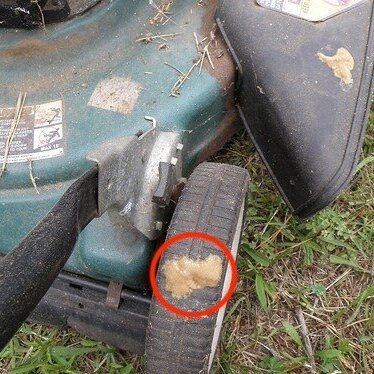Moving to Oregon? Welcome!
You can prevent an invasive pest from finding a new home in Oregon if you clean and check your belongings before you move!
How to Move to Oregon Lists
The ‘How to Move to Oregon’ lists outline very important steps for you to take before bringing your personal belongings with you to the state of Oregon. These precautions are intended to help you prevent non-native species from being brought into Oregon via your possessions. Look over each category applicable to the types of items that you are bringing with you and check off the steps they outline (i.e. if you own a set of lawn chairs, view the list titled “Outdoor Items” for a list of steps to check off before you take these items with you to Oregon).
⬤ ⬤ ⬤
Please visit any of the pages available below that are applicable to you. Learn more about the top insect pests in the U.S.
Please note: These lists do not substitute the mandatory USDA APHIS spongy moth checklist. If you are moving from a location within the gypsy moth quarantine area to a location outside the quarantine area, you must inspect your outdoor household items for gypsy moth and remove all life stages of this destructive insect before you move. You and your moving company may face penalties if you are required to inspect but fail to do so. Not sure if you are located in a spongy moth quarantine area? Visit the Your Move Spongy Moth Free webpage to find out.
Vehicles & Storage Units
(Cars, RVs, motorcycles, ATVs, boats, storage containers, etc.)
Potted Plants
(Indoor houseplants, outdoor plants, garden plants, etc.)
Outdoor Items
(Grills, chairs, tables, fire pits, storage bins, gardening tools, etc.)
Camping & Recreation Items
(Tents, canopies, skis, snowboards, kayaks, sports equipment, etc.)
Some areas are considered quarantine areas, with United States Department of Agriculture requirements for moving to a new location. Visit Your Move Gypsy Moth Free to find out if you live in a quarantine area.
If you are moving out of a quarantine area, you are required to inspect your belongings for spongy moth and remove all life stages found. You must carry a certificate of proof that you or a professional has performed this inspection. If you do not live in a quarantine area, invasive pests could still be living on your belongings. Today, responsible moving includes cleaning and checking your belongings before the move. Your help can protect Oregon’s future economy and environment.
SPONGY moth pupae - Photo credit: PA Department of Conservation and Natural Resources Forestry Archive, Bugwood.org
adult SPONGY moths - Female (top) and male (Bottom) - Photo credit: USDA APHIS PPQ , Bugwood.org
SPONGY moth caterpillar larva - photo credit: John H. Ghent, USDA Forest Service, Bugwood.org
What Can I Do?
The actions we take today will help determine what the future holds for Oregon’s forests & agriculture
You can help prevent invasive species from coming to Oregon if you clean and check your belongings before the move.
How to prevent transporting an invasive species with you:
#1 - Know that some invasive species life stages can live on your belongings unnoticed.
#2 - Check and clean your belongings.
#3 - Confidently move without transporting an invasive species with you.
When your household moves to a new location, all of your belongings FROM INSIDE AND OUTSIDE THE HOME COME WITH YOU
Some life stages of invasive species can survive on your belongings unnoticed; without intending to, you could transport these invasive species to a new home. Photo credit: USDA APHIS PPQ, Bugwood.org
Invasive species life stages like egg masses and plant seeds can easily go unnoticed on household belongings. This is especially true for belongings kept outdoors, including vehicles and storage containers. Photo credit: USDA
Why Should I Care?
Eradication programs have proven successful, but they are expensive
“If the Japanese beetle population in Oregon is not eradicated, damage to Oregon's agricultural industry and natural resources is estimated at up to $45 million annually.”
In more recent years, spongy moth has been introduced nearly every year to Oregon and/or Washington. Smaller scale responses to more recent introductions have so far been successful at eradicating the new spongy moth infestations before they spread. Often, the source of the infestation can be identified and this knowledge contributes to preventing future introductions. [Please note - these graphics were developed before the Spongy Moth name change, we are working to update them]

















